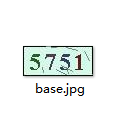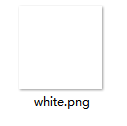您好,登錄后才能下訂單哦!
您好,登錄后才能下訂單哦!
本文小編為大家詳細介紹“怎么使用Python+OpenCV實現圖像識別替換功能”,內容詳細,步驟清晰,細節處理妥當,希望這篇“怎么使用Python+OpenCV實現圖像識別替換功能”文章能幫助大家解決疑惑,下面跟著小編的思路慢慢深入,一起來學習新知識吧。
OpenCV-Python是一個Python庫,旨在解決計算機視覺問題。
OpenCV是一個開源的計算機視覺庫,1999年由英特爾的Gary Bradski啟動。Bradski在訪學過程中注意到,在很多優秀大學的實驗室中,都有非常完備的內部公開的計算機視覺接口。這些接口從一屆學生傳到另一屆學生,對于剛入門的新人來說,使用這些接口比重復造輪子方便多了。這些接口可以讓他們在之前的基礎上更有效地開展工作。OpenCV正是基于為計算機視覺提供通用接口這一目標而被策劃的。
安裝opencv
pip3 install -i https://pypi.doubanio.com/simple/ opencv-python
思路:
1、首先區分三張圖片:
base圖片代表初始化圖片;
template圖片代表需要在大圖中匹配的圖片;
white圖片為需要替換的圖片。



2、然后template圖片逐像素縮小匹配,設定閾值,匹配度到達閾值的圖片,判定為在初始圖片中;否則忽略掉。
3、匹配到最大閾值的地方,返回該區域的位置(x,y)
4、然后用white圖片resize到相應的大小,填補到目標區域。
match函數:
"""檢查模板圖片中是否包含目標圖片"""
def make_cv2(photo1, photo2):
global x, y, w, h, num_1,flag
starttime = datetime.datetime.now()
#讀取base圖片
img_rgb = cv2.imread(f'{photo1}')
#讀取template圖片
template = cv2.imread(f'{photo2}')
h, w = template.shape[:-1]
print('初始寬高', h, w)
res = cv2.matchTemplate(img_rgb, template, cv2.TM_CCOEFF_NORMED)
print('初始最大相似度', res.max())
threshold = res.max()
""",相似度小于0.2的,不予考慮;相似度在[0.2-0.75]之間的,逐漸縮小圖片"""
print(threshold)
while threshold >= 0.1 and threshold <= 0.83:
if w >= 20 and h >= 20:
w = w - 1
h = h - 1
template = cv2.resize(
template, (w, h), interpolation=cv2.INTER_CUBIC)
res = cv2.matchTemplate(img_rgb, template, cv2.TM_CCOEFF_NORMED)
threshold = res.max()
print('寬度:', w, '高度:', h, '相似度:', threshold)
else:
break
"""達到0.75覆蓋之前的圖片"""
if threshold > 0.8:
loc = np.where(res >= threshold)
x = int(loc[1])
y = int(loc[0])
print('覆蓋圖片左上角坐標:', x, y)
for pt in zip(*loc[::-1]):
cv2.rectangle(
img_rgb, pt, (pt[0] + w, pt[1] + h), (255, 144, 51), 1)
num_1 += 1
endtime = datetime.datetime.now()
print("耗時:", endtime - starttime)
overlay_transparent(x, y, photo1, photo3)
else:
flag = Falsereplace函數:
"""將目標圖片鑲嵌到指定坐標位置"""
def overlay_transparent(x, y, photo1, photo3):
#覆蓋圖片的時候上下移動的像素空間
y += 4
global w, h, num_2
background = cv2.imread(f'{photo1}')
overlay = cv2.imread(f'{photo3}')
"""縮放圖片大小"""
overlay = cv2.resize(overlay, (w, h), interpolation=cv2.INTER_CUBIC)
background_width = background.shape[1]
background_height = background.shape[0]
if x >= background_width or y >= background_height:
return background
h, w = overlay.shape[0], overlay.shape[1]
if x + w > background_width:
w = background_width - x
overlay = overlay[:, :w]
if y + h > background_height:
h = background_height - y
overlay = overlay[:h]
if overlay.shape[2] < 4:
overlay = np.concatenate([overlay, np.ones((overlay.shape[0], overlay.shape[1], 1), dtype=overlay.dtype) * 255],axis=2,)
overlay_image = overlay[..., :3]
mask = overlay[..., 3:] / 255.0
background[y:y + h,x:x + w] = (1.0 - mask) * background[y:y + h,x:x + w] + mask * overlay_image
# path = 'result'
path = ''
cv2.imwrite(os.path.join(path, f'1.png'), background)
num_2 += 1
print('插入成功。')
init()每次執行需要初始化x,y(圖片匹配初始位置參數),w,h(圖片縮放初始寬高)
x = 0 y = 0 w = 0 h = 0 flag = True threshold = 0 template = '' num_1 = 0 num_2 = 0 photo3 = '' """參數初始化""" def init(): global x, y, w, h, threshold, template,flag x = 0 y = 0 w = 0 h = 0 threshold = 0 template = ''
完整代碼
import cv2
import datetime
import os
import numpy as np
x = 0
y = 0
w = 0
h = 0
flag = True
threshold = 0
template = ''
num_1 = 0
num_2 = 0
photo3 = ''
"""參數初始化"""
def init():
global x, y, w, h, threshold, template,flag
x = 0
y = 0
w = 0
h = 0
threshold = 0
template = ''
"""檢查模板圖片中是否包含目標圖片"""
def make_cv2(photo1, photo2):
global x, y, w, h, num_1,flag
starttime = datetime.datetime.now()
img_rgb = cv2.imread(f'{photo1}')
template = cv2.imread(f'{photo2}')
h, w = template.shape[:-1]
print('初始寬高', h, w)
res = cv2.matchTemplate(img_rgb, template, cv2.TM_CCOEFF_NORMED)
print('初始最大相似度', res.max())
threshold = res.max()
""",相似度小于0.2的,不予考慮;相似度在[0.2-0.75]之間的,逐漸縮小圖片"""
print(threshold)
while threshold >= 0.1 and threshold <= 0.83:
if w >= 20 and h >= 20:
w = w - 1
h = h - 1
template = cv2.resize(
template, (w, h), interpolation=cv2.INTER_CUBIC)
res = cv2.matchTemplate(img_rgb, template, cv2.TM_CCOEFF_NORMED)
threshold = res.max()
print('寬度:', w, '高度:', h, '相似度:', threshold)
else:
break
"""達到0.75覆蓋之前的圖片"""
if threshold > 0.8:
loc = np.where(res >= threshold)
x = int(loc[1])
y = int(loc[0])
print('覆蓋圖片左上角坐標:', x, y)
for pt in zip(*loc[::-1]):
cv2.rectangle(
img_rgb, pt, (pt[0] + w, pt[1] + h), (255, 144, 51), 1)
num_1 += 1
endtime = datetime.datetime.now()
print("耗時:", endtime - starttime)
overlay_transparent(x, y, photo1, photo3)
else:
flag = False
"""將目標圖片鑲嵌到指定坐標位置"""
def overlay_transparent(x, y, photo1, photo3):
y += 0
global w, h, num_2
background = cv2.imread(f'{photo1}')
overlay = cv2.imread(f'{photo3}')
"""縮放圖片大小"""
overlay = cv2.resize(overlay, (w, h), interpolation=cv2.INTER_CUBIC)
background_width = background.shape[1]
background_height = background.shape[0]
if x >= background_width or y >= background_height:
return background
h, w = overlay.shape[0], overlay.shape[1]
if x + w > background_width:
w = background_width - x
overlay = overlay[:, :w]
if y + h > background_height:
h = background_height - y
overlay = overlay[:h]
if overlay.shape[2] < 4:
overlay = np.concatenate([overlay, np.ones((overlay.shape[0], overlay.shape[1], 1), dtype=overlay.dtype) * 255],axis=2,)
overlay_image = overlay[..., :3]
mask = overlay[..., 3:] / 255.0
background[y:y + h,x:x + w] = (1.0 - mask) * background[y:y + h,x:x + w] + mask * overlay_image
# path = 'result'
path = ''
cv2.imwrite(os.path.join(path, f'1.png'), background)
num_2 += 1
print('插入成功。')
init()
if __name__ == "__main__":
photo1 = "1.png"
photo2 = "3.png"
photo3 = "white.png"
while flag == True:
make_cv2(photo1, photo2)
overlay_transparent(x, y, photo1, photo3)執行結果:

讀到這里,這篇“怎么使用Python+OpenCV實現圖像識別替換功能”文章已經介紹完畢,想要掌握這篇文章的知識點還需要大家自己動手實踐使用過才能領會,如果想了解更多相關內容的文章,歡迎關注億速云行業資訊頻道。
免責聲明:本站發布的內容(圖片、視頻和文字)以原創、轉載和分享為主,文章觀點不代表本網站立場,如果涉及侵權請聯系站長郵箱:is@yisu.com進行舉報,并提供相關證據,一經查實,將立刻刪除涉嫌侵權內容。